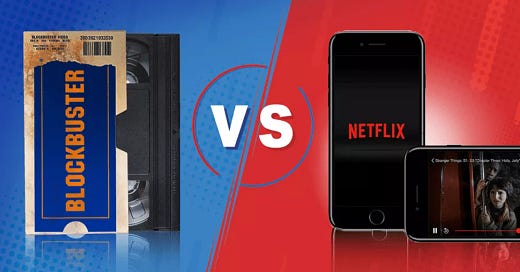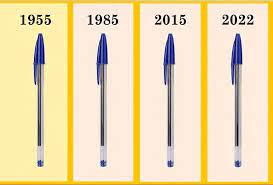Welcome
To the second post of this effort thank you for being here.
About me
My name is Manos Koukouvios. I am Greek and very proud of the Greek Start-up ecosystem. I work for a venture studio as their Digital innovation lead. I like talking a lot, and that got my wife tired… So now I write a lot.
Never change a winning team!
or not?
People are often afraid of change due to various psychological and emotional factors, resulting in resistance to new ideas, processes, or situations. Change disrupts the familiar and introduces uncertainty, which can trigger fear and anxiety. Here are some reasons why people fear change and how it affects innovation:
Comfort zone: Familiarity provides a sense of security and control. Change challenges this comfort zone, making people apprehensive about the unknown.
Loss of control: Change involves relinquishing the known and stepping into unfamiliar territory. The lack of control over outcomes can create fear and resistance.
Fear of failure: Change brings the risk of failure and making mistakes. People worry about potential negative consequences, damage to their reputation, or the perception of incompetence.
Uncertainty: Change introduces unpredictability, and humans have an innate desire for stability. The fear of not knowing the future outcomes hampers their willingness to embrace change.
Loss of status or power: Change can disrupt established hierarchies and power structures, leading to fear among those who benefit from the current system.
The fear of change has significant implications for innovation. It stifles creativity, hampers progress, and limits the adoption of new ideas. When people resist change, they become reluctant to explore innovative solutions, experiment with new methods, or challenge existing norms. This resistance slows down the pace of innovation and hinders societal and technological advancement.
To foster innovation, it is crucial to address these fears by creating a culture that embraces change, encourages open dialogue, provides support and resources, and highlights the potential benefits of innovation. Overcoming the fear of change enables individuals and organizations to embrace new opportunities, adapt to evolving environments, and push the boundaries of what is possible.
“Why waste time proving over and over how great you are when you could be getting better? Why hide deficiencies instead of overcoming them? Why look for friends or partners who will just shore up your self-esteem instead of ones who will also challenge you to grow? And why seek out the tried and true, instead of experiences that will stretch you? The passion for stretching yourself and sticking to it, even (or especially) when it’s not going well, is the hallmark of the growth mindset. This is the mindset that allows people to thrive during some of the most challenging times in their lives.”
― Carol S. Dweck, Mindset: The New Psychology of Success
The Case for not Changing
In 1985, Coca-Cola introduced a new formula for its flagship product, Coca-Cola, after 99 years. This new version was named "New Coke" and was launched in response to 15 consecutive years of declining sales and losing market share to its competitor, Pepsi. However, the public's response to the change was overwhelmingly negative.
People protested the introduction of New Coke by bombarding the consumer hotline with thousands of calls per day. In addition, some individuals stockpiled 1000 bottles of the old Coke in their basements, while others with an entrepreneurial spirit took advantage of the situation by selling the original Coke at exorbitant prices.
Recognizing their mistake, Coca-Cola swiftly realized the extent of the public's dissatisfaction and decided to revert to the original formula. They reintroduced it as "Coca-Cola Classic." Despite this initial blunder, the incident played a pivotal role in helping Coca-Cola regain its market share and solidify its position as the leading soft drink company in the world.
"We set out to change the dynamics of sugar colas in the United States, and we did exactly that -- albeit not in the way we had planned,"
Then Chairman and CEO Roberto Goizueta
Coca-Cola executives recognized the necessity for a change to counter the gradual decline in their market share. Whether their decision to alter the original recipe was a deliberate attempt to create a crisis that would highlight the value of what people had and encourage greater appreciation, or simply an unintended error, remains unknown. However, what we can conclude is that while change is crucial for staying relevant, certain aspects should remain unchanged.
In essence, this incident highlights the significance of change in maintaining relevance. However, it also serves as a reminder that certain core elements should remain consistent. Balancing innovation with the preservation of what makes a product or brand beloved is key to navigating the complexities of the market.
The Case for Change
Blockbuster was a video rental company that enjoyed unparalleled success during the late 20th century, but its inability to adapt to the evolving market ultimately led to its demise.
Blockbuster's downfall can be attributed to several key factors. First and foremost, the advent of the internet and digital technology revolutionized the way people consumed media. With the rise of online streaming services, such as Netflix, Hulu, and later, Amazon Prime Video, the traditional video rental model became obsolete. Blockbuster failed to recognize the potential of streaming and clung to its brick-and-mortar rental stores, which were becoming increasingly inconvenient for customers.
Another significant factor was Blockbuster's strategic missteps. In 2000, when Netflix approached Blockbuster with a partnership proposal, the latter declined the offer. Netflix proposed a business model focused on online DVD rentals, which would eventually evolve into a streaming platform. Blockbuster's management failed to see the potential of this new approach, considering it a niche market with limited prospects. This decision proved to be a monumental mistake, as Netflix went on to dominate the streaming industry and become a major player in the entertainment landscape.
Moreover, Blockbuster's business model was heavily reliant on late fees for revenue. Customers were required to return rentals within a specific timeframe, and if they failed to do so, they faced substantial penalties. While this approach generated significant income for Blockbuster, it also alienated customers who were increasingly seeking more convenient and flexible options. In contrast, Netflix introduced a subscription-based model that eliminated late fees, attracting a growing customer base.
The failure of Blockbuster serves as a cautionary tale for businesses that fail to embrace innovation and adapt to shifting consumer preferences. It highlights the importance of recognizing emerging technologies and evolving customer behaviors to stay relevant in a rapidly changing marketplace. The legacy of Blockbuster serves as a reminder that even the most dominant businesses can fall from grace if they are unable to navigate the winds of change.
The perfect balance
Bic pens have achieved enduring success through their timeless design. For decades, their iconic simplicity has captivated consumers, transcending trends and fads. With unwavering reliability, these pens have etched their way into our collective consciousness.
Bic's secret lies in its unwavering commitment to quality and functionality. By maintaining a consistent design, they have perfected the art of pen-making. The classic cylindrical shape fits comfortably in our hands, ensuring effortless writing experiences.
Moreover, Bic Pens have embraced innovation where it counts. While their exterior remains unchanged, their ink technology has evolved over time. From oil-based to advanced ballpoint, Bic has adapted to meet the demands of modern writing. This balance between tradition and progress has kept them relevant.
Another key factor in Bic's enduring success is its affordability. By streamlining production and utilizing cost-effective materials, they have made their pens accessible to all. This commitment to affordability has made Bic Pens a staple in homes, offices, and schools worldwide.
Additionally, Bic's design simplicity creates a sense of familiarity and trust. When we see that instantly recognizable cap and transparent barrel, we know we can rely on the pen to perform its duty. It has become a symbol of reliability, earning the loyalty of generations.
In essence, Bic Pens’ continued success can be attributed to its unwavering commitment to quality, functional design, and affordability. By blending tradition and innovation, they have remained relevant and trustworthy in an ever-changing world. And as long as people value reliability and simplicity, Bic pens will continue to leave their mark on the paper and in our lives.
True Innovation VS a PR stunt
Denim is a fabric that has played a significant role in the history of fashion and has become an iconic symbol of American culture. Levi Strauss & Co., commonly known as Levi's, is one of the most renowned denim brands and has been at the forefront of innovation in the denim industry.
The story of Levi's began in the mid-19th century when Levi Strauss, a German-American businessman, partnered with Jacob Davis, a tailor, to create durable workwear. In 1873, they received a patent for their innovative design of riveted denim pants, which featured copper rivets at the points of strain to reinforce the fabric. This invention laid the foundation for modern jeans and set the stage for Levi's success.
Levi's introduced its Two-Horse design, featuring the famous "Arcuate" stitching pattern on the back pockets. This distinctive double-arch design not only served as a form of branding but also reinforced the pockets' strength, making them less likely to tear. The Two-Horse design became a recognizable trademark and a symbol of quality craftsmanship.
In the 1980s, Levi's played a significant role in popularizing stonewashed denim. Levi's also experimented with other finishing techniques such as distressing, whiskering, and bleaching to achieve various worn-in effects, offering consumers a range of aesthetic choices.
Levi's has embraced technological advancements to enhance the functionality and comfort of their jeans. They have incorporated stretch fabrics, such as elastane, to provide greater mobility and flexibility.
In recent years, as sustainability has gained prominence, Levi's has been at the forefront of sustainable innovation in the denim industry. They have implemented various initiatives to reduce water usage, minimize chemical impact, and promote recycling. For example, Levi's Water<Less™ technology reduces water consumption in the finishing process, and they have partnered with organizations to promote garment recycling and reduce waste.
You might wonder why I am telling you all this…
This are what I consider innovative changes made to a classic product that over time improved its usability and appearance while being conscious of the environment. Let’s see know what I don’t consider innovation
Yeap, you just take a regular jacket you make a small pocket in the sleeve where this haptic “whatever” sensor resides for me to tap my sleeve in order to change a song on my smartphone.
I understand that people are more likely to talk about that than the latest elastane molecule that will stretch my jeans enough to fit after I visit my grandma, but in my book that is not innovation.
The verdict
In the realm of business, countless cases exist where the decision to change or the failure to do so has either propelled a company forward or led to its demise. Change can take various forms, ranging from major upheavals to subtle refinements, and often a combination of both is necessary. To navigate this landscape effectively, it is crucial to develop the ability to strategize and evaluate the bigger picture, allowing us to determine when and how to make our best bet.
Grand strategy is the art of looking beyond the present battle and calculating ahead. Focus on your ultimate goal and plot to reach it.
Robert Greene, The 33 Strategies of War
Recommendations
(Keep in mind this is what I like… Don’t judge me :))
I am sure all of you know Lex Fridman, I wish you knew Manolis Kellis as well! all Greeks should be proud of this remarkable man.
A great interview of the remarkable journey of Lenses.io from inception to exit (Greek Language)
The man who revived The Walt Disney Company, Bob Iger shares his story with remarkable lessons for all of us.
A community is a living thing where people, with their personal stories, provide value by collaborating!
Please help us grow our community.











